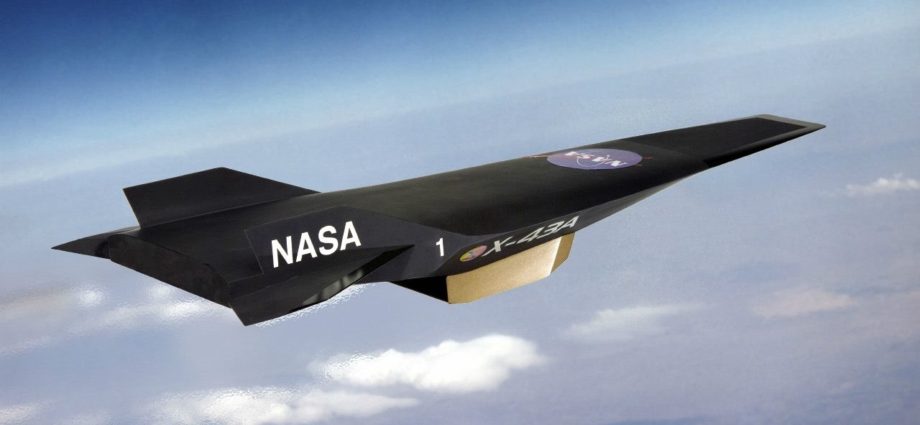Number 10: Sukhoi Su-27 Flanker. Its top speed of 2.35 mach brings it to the very edge of USSR craftsmanship with a twin engine and the first fly-by-wire control system on a Russian jet ever. It was built for air superiority to counter the new American 3.5 gen fighters such as the F-15 Eagle. It is armed with a 30 mm gun and 10 external pylons that can hold both Air-to-Air, heat-seeking, short and medium range missiles.
Number 9: General Dynamics F-111 Aardvark . Number nine on this list is not a fighter but a tactical bomber capable of flying at mach 2.5. It had, before it’s retirement in 1998, 9 hardpoints and 2 weapon bays, together being able to deliver a payload of 14,300 kg of bombs, a nuclear bomb, air-to-air missiles or a 2000 round machine gun could be fitted. However due to the Aardvark’s role in air it was rarely fitted with the gun. The Aardvark was the first aircraft in production with a variable sweep with configuration which is why it was also tested for carrier-based operations, however this was never completed (although there were some successful tries)
Number 8: McDonnell Douglas F-15 Eagle The F-15 has been claimed to be one of the most successful aircraft ever built and is still in service with the US Air Force. The Eagle’s twin-engine and thrust-to-weight ratio of almost 1:1 can propel the 18,000 kg aircraft to more than 2.5 times the speed of sound. It was introduced in 1976 and will continue to be a part of the air force beyond 2025. T
Number 7: Mikoyan MiG-31 Foxbat With a top speed of mach 2.83, the next aircraft on our list is the Mikoyan Gurevich-31 Foxhound (also this one was once available for tourist flights!). Due to its enormous twin-engine with a thrust of 2*152kN it was able to fly at supersonic speeds at both high- and low altitudes.
Number 6: XB-70 Valkyrie . The XB-70 Valkyrie was a unique aircraft with six engines which together could accelerate the 240,000 kilogram aircraft to a velocity of mach 3. This speed resulted in the frame of the aircraft being heated up to as much as 330°C on some areas. The extreme speed was needed for two reasons: 1: To accelerate away from Soviet interceptors and 2: To be able to escape the blast of the nuclear bombs that it was capable of dropping. The big size (weight) was needed to carry the fuel needed for the 6,900 kilometer flight into the Soviet Union and escape without refueling and to house the 14 nuclear bombs that it was capable of carrying. The aircraft had its first flight in 1964 and is now retired, only two were built.
Number 5: Bell X-2 Starbuster . The Starbuster was an American research aircraft which had its first flight in 1955 and was retired in 1956. It was a continuation of the X-2 program and so Its area of investigation was to see how aircrafts behaved when flying at speeds higher than mach 2.0. It did, as can be understood, not carry any weapons and featured a back-swept wing which made it have little air-resistance and was by that able to achieve the stunning speed of 3.196 mach in 1956.
Number 4: Mikoyan MiG-25 Foxbat. This jet was a Soviet machine built to intercept American aircraft during the cold war like the SR-71 and high- slow flying surveillance aircraft. Since it was built to intercept the SR-71 it was required to have an extreme speed, hence its mach 3.2 top capability. The MiG-25 was also the fastest plane ever offered for fun flights by MiGFlug – it was mainly used for Edge of Space flights.
Number 3: Lockheed YF-12. This jet was an American interceptor prototype with a top speed of mach 3.35. It looked almost like the SR-71 Blackbird and featured three Air-to-Air missiles. The reason for it looking a lot like the SR-71 was because the SR-71 was based on the YF-12, and also because both of them had the same designer, the extremely famous Clarence “Kelly” Johnson.
Number 2: Lockheed SR-71 Blackbird After its introduction in 1966 it has been used by both the USAF and NASA. 32 Blackbirds were built, all used for reconnaissance and experimental research. It featured stealth technology but if it was, against all odds, spotted by enemy forces, it could outrun the interceptors or surface-to-air missiles that was fired at it, due to its fantastic speed. The Blackbird was so fast that the air in front of it did not have time to escape, hence building up a huge pressure, and raised temperature.
Number 1: North American X-15 This aircraft has the current world record for the fastest manned aircraft. Its maximum speed was mach 6.70 (about 7,200 km/h) which it attained on the 3rd of October 1967 thanks to its pilot William J. “Pete” Knight. To be stable at these super high velocities, Therefore a B-52 Stratofortress had to carry it up to an altitude of about 14,000 meters before dropping it at which it ignited its own engines.

hi
I hat you